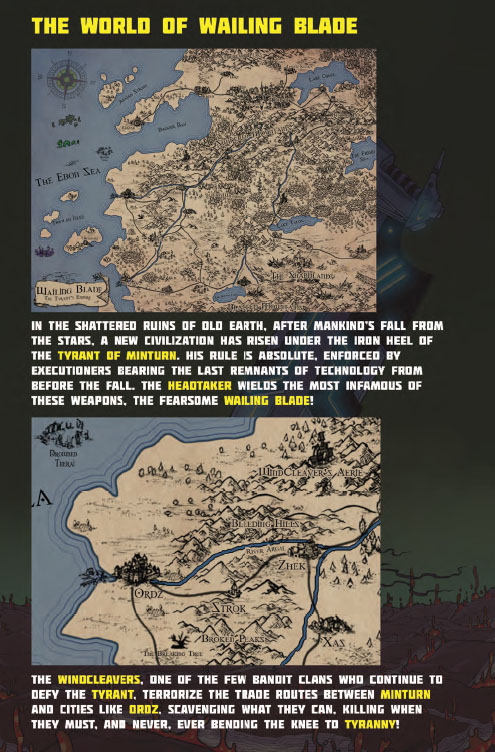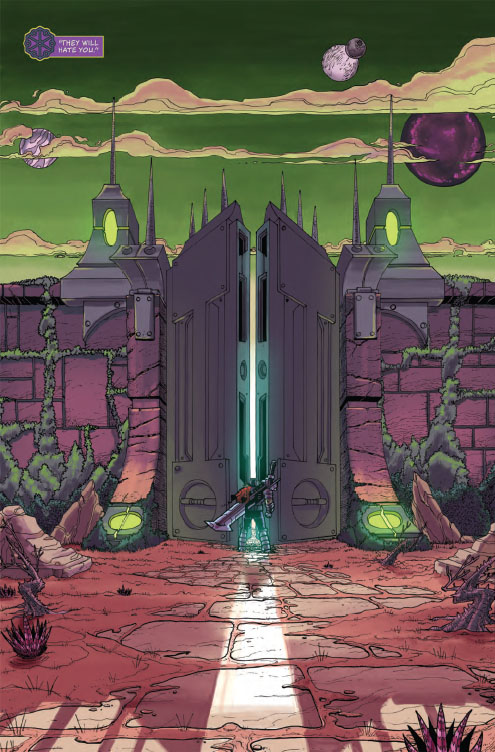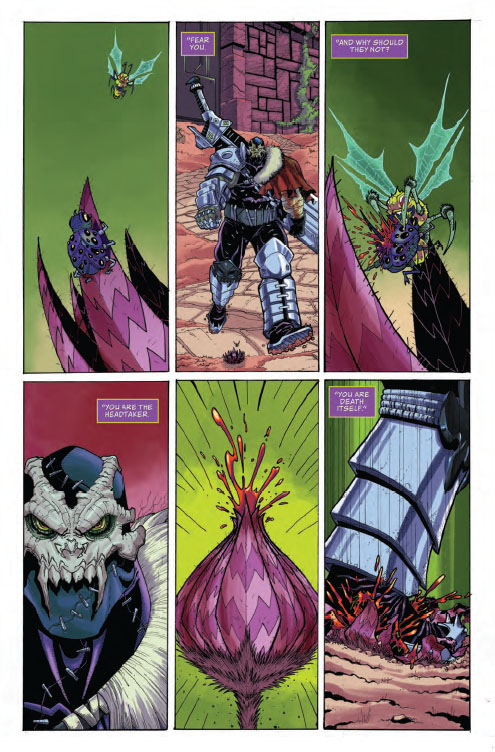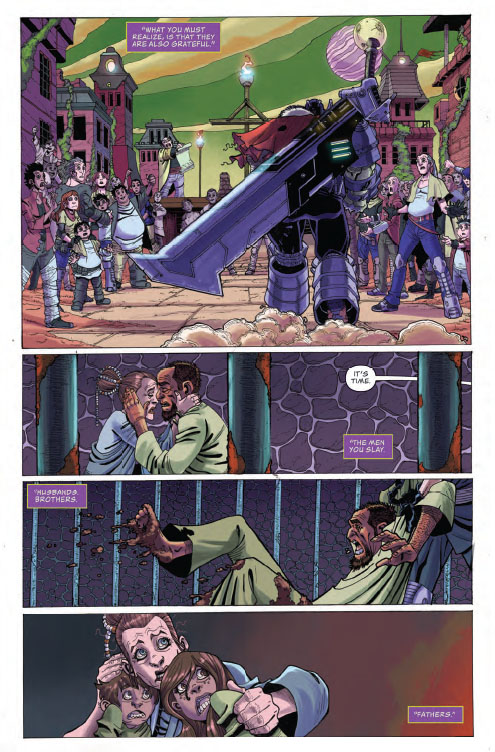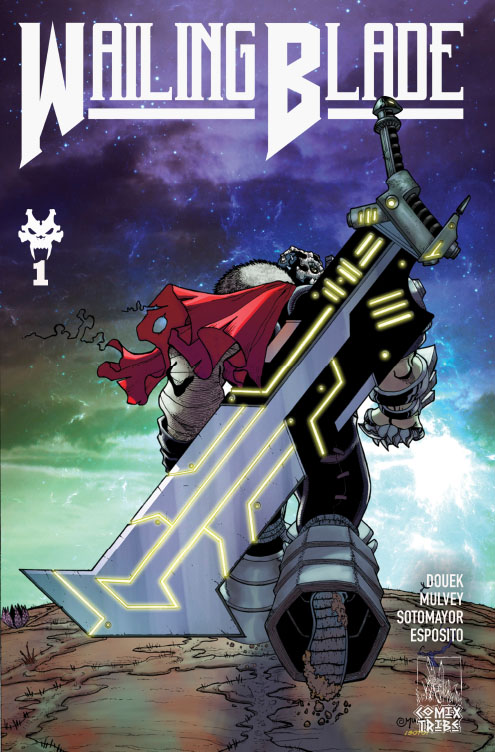
- Wailing Blade #1
- Comix Tribe
- Written by Rich Douek
- Art by Joe Mulvey
- Colors by Chris Sotomayor & Jules Rivera
- Letters by Taylor Esposito
In the shattered ruins of Old Earth, after mankind’s fall from the stars, a new civilization has risen under the iron heel of the Tyrant of Minturn. His rule is absolute, enforced by executioners bearing the last remnants of technology from before the Fall. The Headtaker wields the most infamous of these weapons, the fearsome Wailing Blade!
In a market not hurting for post-apocalyptic stories, it takes a little bit of work to put something out there that can stand apart from the crowd. Whether that effort is poured into building an interesting world, creating a narrative that can compel a reader to turn the page, introducing a villain that doesn’t fall into an overused stereotype that can kill an antagonist faster than a silver bullet, or presenting eye-catching and dynamic artwork, there are pitfalls aplenty to derail the most ambitious independent titles. So far, co-conspirators Rich Douek and Joe Mulvey have done their due diligence in every category, to one degree or another.
Written by Rich Douek, the first thing that really stood out (okay, the second thing… the first thing was some impressive artwork, which we’ll get to in a minute) was that the narrative doesn’t start from the perspective of a heroic main character. The story opens with a bit of introspection, seemingly on the part of Wailing Blade’s very own Vader, the Headtaker (the dialogue could be coming from another source, giving the Tyrant’s chief executioner a bit of a moral boost, but I kinda like the idea that it’s Headtaker himself, showing some self-awareness). The monologue acknowledges that he will be hated, he will be feared, but at the same time he will be appreciated and revered. By presenting himself as the focus of the people’s hate, the citizens can ignore the fact that any one of them could fall under his blade.
From these insights, Douek moves the story into the perspective of the Windcleavers, that group who refuses to bend beneath the Tyrant’s rule and who would typically fill the role of stalwart heroes… except in place of the story’s Luke Skywalker, we’re given Tychon and he’s kind of a dick. Brash, arrogant, stubborn as an ass and unwilling to acknowledge that he might not have all the answers, Tychon comes across as a petulant man-child trying to step out of the shadow of his father Auros, the true leader of the rebel band. Taken together, these story elements serve to separate Wailing Blade from many trope-filled action titles, showing that Douek is willing to take some tougher paths in his writing by presenting characters who don’t quite fit the common mold.
Driving Wailing Blade’s visual style, Joe Mulvey’s art is dynamic and larger than life and the action moves over the page very well. That aside, I was especially impressed with Mulvey’s ability to show a range of emotion in the facial expressions of his characters, something that seems to be a secondary concern with a lot of indie artists whose range begins and ends with rage. In particular, he put a lot of focus into the eyes of the Headtaker, giving the fully hooded and helmeted warrior his own emotional outlet. With the addition of colors by Chris Sotomayor & Jules Rivera, Wailing Blade’s overall look reminded me of the work of ___ (X-Men: Age of Apocalypse), or more recently that of Chris Imber.
The final contribution to the book’s visuals comes courtesy of letterer Taylor Esposito. In general, not enough credit is given to letterers, and if you can’t appreciate the work of a good one it’s because you’ve never seen an example of a really bad one. Bad lettering can take over a page, impede the narrative flow of a story, and interfere with the artwork. Esposito, a name I’ve come to recognize, doesn’t fall into any of those categories, and is even able to bring a little life to Wailing Blade’s namesake, the sword that “wails with the anguished cries” of its victims.
Wailing Blade is a project that has some pretty lofty ambitions. According to Douek’s afterword, the book’s been over two years in development, with the hope that it can stand out among the host of action/fantasy/post-apocalyptic/sword-swinging stories on the shelves. The most important job of the first issue of any series is to get the reader interested in what’s going to happen in issue two.
Mission accomplished… With a Kickstarter campaign fully funded- and then some- with a week still to go, there’s still time to jump onboard the head loppin’ train!
